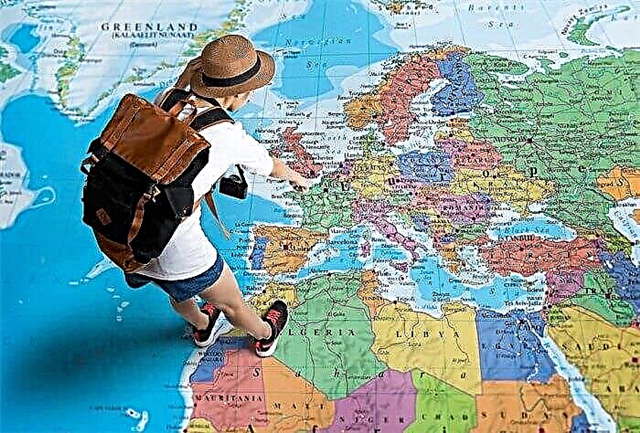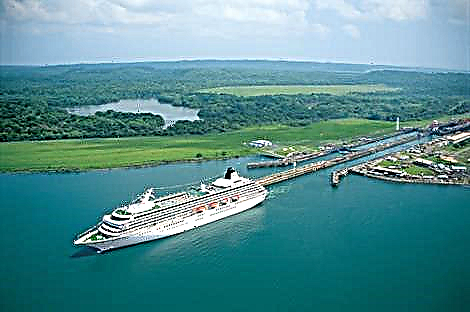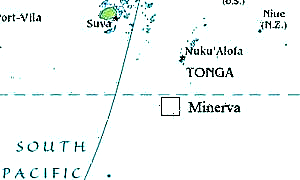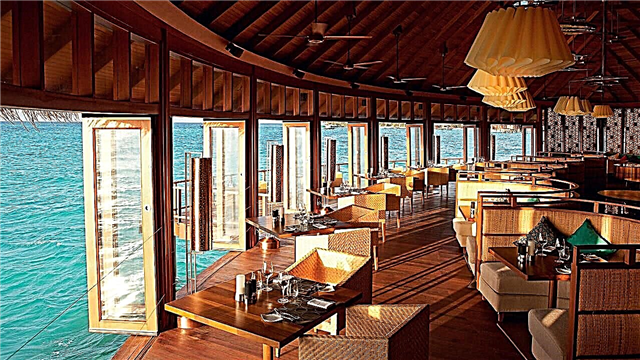There are 7 world famous wonders of the world that inspire admiration for the beauty and titanic work of the people behind every masterpiece. But in addition to these miracles, their dark counterparts exist. They are visible evidence that frightening and cruel events took place during the existence of mankind.
However, these notorious sights should not be forgotten, as they remind us of the difficulties our ancestors suffered and the mistakes made by the representatives of Homo sapiens.
Introducing you top 7 most terrible wonders of the world. Some of them are created by human hands. And part - natural phenomena.
7. The Black Hole in Guatemala City

A huge funnel with a diameter of 20 meters and a depth of 30 meters appeared in Guatemala in 2010 after a tropical storm "Agatha". This cavity, presumably, was formed due to the fact that the city and its underground infrastructure were built in the region, where the first few hundred meters of the land mainly consist of pumice. This material was formed as a result of a volcanic eruption.
“Pumice occurs as a stream (of loose, gravel particles), and because of heat and weight it turns into solid rock,” explained geologist Sam Bonis. In Guatemala, pumice has not yet formed into such a rock, so it is easy to destroy it, especially with a strong pressure of water.
Previously, in the place of the hole, which resembles a bottomless pit leading straight to hell, there was a crossroads and an empty building of a garment factory. Now the bottom of the Black Hole is not visible even from a helicopter.
Many take the giant funnel for processing in Photoshop because of its regular round shape. However, scientists believe that the round edges of this natural "well" indicate the presence of a karst cavity under it.
6. Prison Alcatraz
 Superprotected place of detention of such legends of the criminal world as Al Capone and Robert Stroud (aka “Birds of Alcatraz”). This facility, located on its own island near San Francisco, is known as the "virtual prison Titanic." Some prisoners managed to escape, but officially not one of them was successful. The fugitives were either killed while trying to escape, or captured, or drowned in the sea.
Superprotected place of detention of such legends of the criminal world as Al Capone and Robert Stroud (aka “Birds of Alcatraz”). This facility, located on its own island near San Francisco, is known as the "virtual prison Titanic." Some prisoners managed to escape, but officially not one of them was successful. The fugitives were either killed while trying to escape, or captured, or drowned in the sea.
Now Alcatraz has become a museum. And on the island where the prison is located, the famous action movie “The Rock” was filmed with Sean Connery and Nicolas Cage. During the filming of the hostage scene, the actors were locked in cameras, because their sliding doors for some reason did not open. They had to spend several hours in captivity until help from the mainland arrived. Now real tourists are not locked up in chambers to avoid such situations.
5. Pompeii - open-air museum
 The ancient Roman city almost disappeared under a layer of volcanic ash. His excavations allowed researchers to recreate a picture of the daily life of local residents. The furnishings of houses, buildings, streets, even graffiti on the walls - all this has survived to the present day, becoming a sad but priceless evidence of ancient Roman life, culture and architecture.
The ancient Roman city almost disappeared under a layer of volcanic ash. His excavations allowed researchers to recreate a picture of the daily life of local residents. The furnishings of houses, buildings, streets, even graffiti on the walls - all this has survived to the present day, becoming a sad but priceless evidence of ancient Roman life, culture and architecture.
The bodies of people and animals who were unable to escape from the 19-hour eruption of Mount Vesuvius in 79 AD were also discovered. In the ashes here and there were voids, and the Italian archaeologist Giuseppe Fiorelli recreated the figures of deceased citizens by casting them with gypsum. Small and large gypsum statues lying in various poses show how cruel Mother Nature can be to her children.
Most of the victims died not from asphyxiation, as previously thought, but from streams consisting of a mixture of stones, ash and volcanic gases. They rushed at a speed of up to 700 kilometers per hour.
4. Shadows of Hiroshima

On the fourth line in the selection of the most terrible sights are evidence of the first atomic bombing in the history of mankind. They are called the Shadows of Hiroshima.
The essence of the phenomenon is as follows: the shadow, which during the nuclear explosion was partially protected by the body of the "owner", receives less radiation than what surrounds it. Therefore, the place where the shadow was remains unburnt.
But it can be said simpler: some memories are so scary that they simply are not erased.
3. Ground Zero
 On the Ground Zero (zero level) site in Lower Manhattan until September 11, 2001, the World Trade Center was located. Those associated with this tragic event annually come to the site of the tragedy to honor the memory of the dead.
On the Ground Zero (zero level) site in Lower Manhattan until September 11, 2001, the World Trade Center was located. Those associated with this tragic event annually come to the site of the tragedy to honor the memory of the dead.
Every year on September 11, 88 spotlights are lit at the Ground Zero site. They form two rays parallel to each other, directed upwards, and this ceremony was called "Initiation in the Light."
2. Chernobyl
 In second place on the list of the most terrible wonders of the world is the whole city located on the Pripyat River, Ukraine. Abandoned Chernobyl is a reminder that humanity should look for safer, more environmentally friendly forms of energy production (windmills, water turbines, etc.).
In second place on the list of the most terrible wonders of the world is the whole city located on the Pripyat River, Ukraine. Abandoned Chernobyl is a reminder that humanity should look for safer, more environmentally friendly forms of energy production (windmills, water turbines, etc.).
In 1986, Ukraine experienced the most terrible radioactive disaster in the world. The accident in the fourth power unit led to the release into the environment of a huge amount of radioactive products such as cesium-137 and strontium-90. Over 115 thousand people had to be evacuated from a 30-kilometer zone, and according to various estimates, from 600 to 900 thousand people took part in the aftermath of the accident. And the city of Pripyat is now considered one of the most terrible places on the planet.
Currently, according to the IAEA regulations in Chernobyl, you can live on a rotational basis - 2-3 months for six months. And the radiation levels that could cause radiation sickness remained inside the Sarcophagus, behind the thick walls of which an exploding reactor was hidden.
Chernobyl spawned a series of myths and speculation, many books and the popular S.T.A.L.K.E.R.
1. Auschwitz (Auschwitz)
 The Auschwitz-Birkenau Historical Museum is located in the Polish city of Auschwitz (the Germans renamed it Auschwitz). He returns his visitors to not-so-distant times, when people who committed genocide roamed the land freely.
The Auschwitz-Birkenau Historical Museum is located in the Polish city of Auschwitz (the Germans renamed it Auschwitz). He returns his visitors to not-so-distant times, when people who committed genocide roamed the land freely.
This is the largest of all Nazi death camps, now one of the symbols of the Holocaust. About 1.4 million people were killed in Auschwitz, of which 1.1 million were Jews. The Great Soviet Encyclopedia provides an even larger number of victims - 4 million.
Despite all the evil that was happening on the territory of this death camp, it’s good that it was restored and turned into a museum. So future generations will be able to find out what the human race is capable of.












